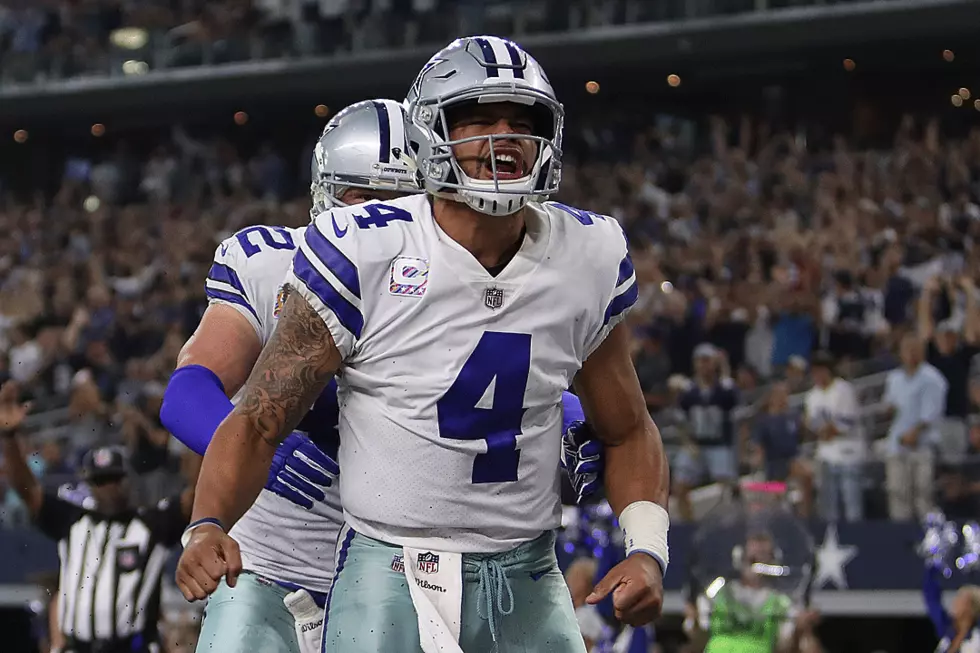
Sidearming His Way to the Majors: How Reliever Greg Burke Reinvented His Pitching Career
Greg Burke's career trajectory might not be as drama-filled as Josh Hamilton's, as awe-inspiring as Rick Ankiel's, or as dynamic as Jose Bautista's, but to finally hold down a major league bullpen spot after eight years of toiling in the Independent and minor leagues--as an undrafted free agent--is certainly noteworthy.
Despite originally being selected by the New York Mets as the 1262nd overall pick in the 2000 draft, Burke instead opted to attend Duke University. Yet, after graduating, no major league organization came knocking.
Wanting to keep his arm fresh, the right-handed pitcher spent the 2005 season with the Atlantic City Surf, an independent team in the Atlantic League. Mediocre season aside (3.70 ERA, 1.37 WHIP, and 2.31 K/BB over 48.6 relief innings), the San Diego Padres inked the 23-year-old to a minor league contract.
The Padres initially used Burke as a starting pitcher, where he enjoyed moderate success (3.58 ERA, 1.19 WHIP, 6.21 K/BB over 120.6 innings at Single-A in 2006). But once the righty got promoted to Advanced-A, hitters began to knock him around (combined 5.32 ERA, 1.40 WHIP, 2.30 K/BB between 2006 and 2007).
Out of the bullpen, Burke seemed to come into his own. In 2008, at Double-A, the New Jersey native posted a sublime 2.24 ERA, 1.10 WHIP, and 5.41 K/BB over 84.3 innings. He even notched twenty-three saves. And after similar dominance at Triple-A the following season (2.25 ERA, 0.75 WHIP, 3.50 K/BB over 16 innings), the Padres promoted Burke to the show.
For the first time since being a starting pitcher at Advanced-A, Burke experienced difficulty getting hitters out. The then 26-year-old posted a 92 ERA+, with a 4.5 percent BB/9, and just a 6.5 percent K/9. The Padres banished Burke back to Triple-A in 2010, where he stayed through 2011--only to combined for a 5.69 ERA, 1.62 WHIP, and 2.00 K/BB. At age 29, and without a pitching job, it seemed like the end of the line for Burke.
Then Burke contacted 3P Sports, the brainchild of Rick Peterson, who is a former big league pitching coach, and currently the Director of Pitching Development for the Baltimore Orioles. 3P Sports is a baseball academy based on utilizing biomechanical data to dissect and help fix pitchers’ mechanics, and focuses on adjusting mechanics to force pitchers to pound the bottom part of the strike zone.
"[I told Greg to have] a 3P Sports [biomechanical] analysis [performed], so I can specifically pinpoint exactly what adjustments we'll need to make [on his conventional delivery]," said Peterson. "And then we met at a high school field in January [to go over some of the drills and adjustments I created for him]."
The tinkering got some notice, as Peterson received a call from a big league scout, who touted Burke's improved delivery and velocity. The only problem was that the scout's organization didn't have any room for Burke on the team--but asked if the Orioles did.
"As it turned out, it all worked out," said Peterson. "[We] invited him to spring training [for simulated games]."
Yet, even with the improved mechanics, Burke didn't pass the muster in the simulated games, and his career was once again looking pretty grim. Then Burke, who had been throwing all spring with newly converted side-armed reliever, suggested he too drop his arm angle down.
"[Burke] showed me the angle, which was below side arm, and we shadowboxed this technique for 10-15 minutes," said Peterson. [And after I helped finesse his technique], I said, 'Holy shit, you've got to be kidding me. The bottom is just falling out of [your] pitches!"
Burke himself was impressed. His pitches as a conventional, upright pitcher never had this type of sink.
When Peterson called over John Stockstill, the Orioles Director of Player Development, he concurred with the coach's sentiments.
Both Peterson and Stockstill decided that in order to make an informed decision on Burke and his new arm slot, they needed him to face some live minor league hitters. Luckily, there were some simulated games going on, so they inserted Burke on the hill. And the results were fantastic.
“So the [hitters were] swinging like they [were] cross-eyed,” said Peterson. “[Burke was] throwing backwards sinkers to right-handers, and they're either swinging and missing--with bad swings--or just topping balls in front of home plate. And [Burke was] throwing 91-92 MPH.”
Peterson and Stockstill were astonished.
“[I said] to myself, ‘I've never see anybody maintain this type of velocity below side arm,’” said Peterson. “I told John [Stockstill], ‘[Burke’s] not going anywhere. This is big league pitching, right here.’"
Peterson worked with Burke for another six days before officially sending him to Double-A. The pitcher nobody wanted was now dominating to the tune of a 1.53 ERA, 0.85 WHIP, and 5.00 K/BB.
“The scouts are just like drooling over him,” said Peterson. “They said, ‘You've got to be kidding me! I've seen this guy pitch for the last few years, and I've never seen anything like this.’ [Burke] was a total reclamation. And I mean, he's pounding the bottom of the strike zone and getting grounders.”
Burke was promoted to Triple-A, and continued to keep hitters off-balance with a 1.53 ERA, 1.01 WHIP, and 2.73 K/BB over 35.1 innings. In fact, he only surrendered one home run the entire season. Yet, despite the achievement, the Orioles never called him up to the major leagues.
Looking to add bullpen depth this past off-season, the New York Mets—who tried to sign Burke thirteen years prior—inked the reliever to a minor league deal. The 30 year-old wasn’t guaranteed a spot, but given the Mets’ dire straights, Burke made his first big league appearance in four years on April 3, 2013.
After a poor month of April (.303/.361/.424 line against), Burke has since settled in. Over his past 9.3 innings, the side-arm reliever has posted a dominant .216/.256/.270 line against, with a 3.5 K/BB. He has also yet to allow a home run.
Peterson’s advice for Burke to “pound the bottom of the zone” has obviously been a key factor for the pitcher’s success. Despite only throwing 46% of his pitches in the bottom of the zone in 2009, Burke’s adjusted approach has allowed him to place a whopping 64.5% of his pitches there so far in 2013. Considering Burke’s BABIP in the bottom of the zone this season is .277, the reliever has successfully found a way to create more outs for the New York Mets--and hopefully for Burke himself, a home for the foreseeable future.
More From GuySpeed









